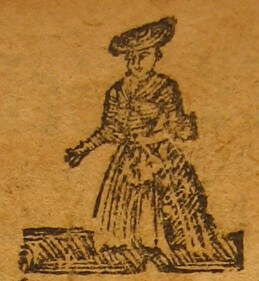As part of my research on 18thcentury working class clothing, I have been studying indentured and enslaved female servants who immigrated to the American colonies. I created a database that now houses records for 1000 women and their 6000 garments. Runaway advertisements document not only clothing, but also physical characteristics, habits, skills, and other information. I started on this journey to study clothing, and to discover, if possible, elements of choice and fashion among women of the lesser sort.
One of my next steps in the project is to code each’s eloping servant’s dress by type. I needed a way to distinguish quickly the style each woman presented. In this way, I can study those with overall utilitarian appearances together. I can study the differences between enslaved women wearing jacket & petticoat combinations of fabrics often purchased for slaves, versus those who acquired more fashionable attire and personalized their appearances. The basic distinctions are below. The uniqueness of each woman’s attire requires me interpreting, but the below categories provide some ground rules:
F – Fashionable – silk or other fashionable fabrics, fashionable accessories, pumps, ribbons, jewelry, hair dressing, trim.
M – Middling servant – plain neat dress in better fabrics, fashionable or neat and plain accessories.
S – Standard servant dress with accessories – basic garments, coarser fabrics and/or rougher shoes, but with occasionally fashionable accessories.
N – Utilitarian – Coarse fabric and shoes, plain or no accessories.
U – Field slave uniform – jacket/waistcoat & petticoat combo.
B – Male clothing.
O – Other – like breech clouts or undetermined clothing.
More as I work to make the information within the data more accessible!
For other posts on the Runaway Clothing Database project click here, here and here.
And NEW – read the full article here. If it doesn’t come up at first, visit igentaconnect.com and search “Had On When She Went Away.”


[…] thanks to Becky Fifield (The Still Room Blog) for revisiting the article she published last year on her amazing Runaway Clothing Database (RCD). It is available […]
[…] and enslaved women (see my article here, as well as previous posts on the project here, here, here, and here) makes this a fascinating resource. By locating where their masters lived, I can […]